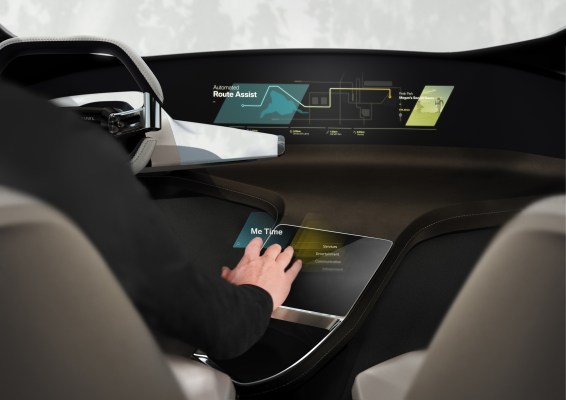BMW is doing something pretty sci-fi with the interior of its vehicles at CES – it’s showing off a new HoloActive Touch system, which is a touch sensitive display for showing the driver information about music, navigation and more, which appears to float in air, and which also provides actual felt, tactile feedback in response to interactions.
The new interactive holograph-style display is part of BMW’s i Inside Future study, the company says, which is designed to give CES attendees a glimpse at what it might look like to use cars that are fully connected and offer full self-driving features. HoloActive Touch incorporates heads-up display features, too, meaning it could span the driver’s field of view and provide a more immersive way to access info about your car and your ride.
As for the tech used to make the interface feel somewhat physical, even though you’re just poking around in mid-air, we’ve heard it might be sourced from Ultrahaptics, a company whose whole mission is to make it possible to feel things including “invisible buttons and dials” when you want them to be tangible, and then not when you don’t.
On its website, Ultrahaptics lists automotive application potential as providing the means with which automakers can let drivers “know their gesture has been received, without taking their eyes off the road.” With any touchscreen interface, providing actual tactile feedback is key in a driving context, since it’s what will prevent distraction, and, hopefully, accidents.
Ultrahaptics uses ultrasonic (sound that can’t be detected by human) waves to provide the sensation of physical touch for objects that aren’t really there. Based on previous CES demos, it feels remarkably lifelike and could indeed be convincing when paired with floating visuals of dials and buttons.
Interacting with a floating screen, tactile feedback or not, still seems like a recipe for distraction. This is still a concept, however, and it very well could provide a more natural interface in actual use and with further development leading to actual productization. BMW’s iDrive, which centered around using a puck-type controller to navigate infotainment features, was considered difficult to use initially but has improved considerably in recent years.
